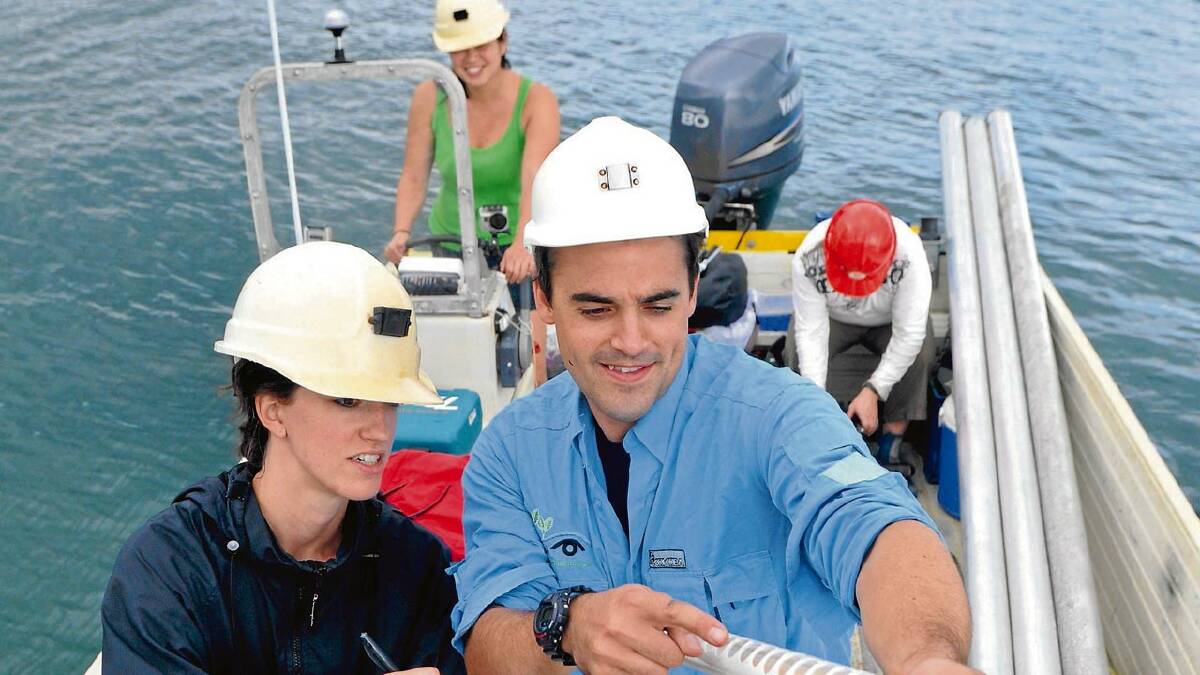IN the 1960s 11 holes were blown into one of the country’s largest seagrass meadows.
Subscribe now for unlimited access.
or signup to continue reading
It was at Hole in the Wall in Booderee National Park, when seismic testing was used to check ground stability for a proposed nuclear testing facility.
Nearly 50 years later, the holes are clearly visible on Google Earth and aren’t expected to grow back for another 100 years.
This week marine ecologist Dr Peter Macreadie will be taking sediment cores from the damaged areas and measuring the carbon loss from the area.
The Chancellor’s Post Doctoral Research Fellow at the University of Technology Sydney, Dr Macreadie specialises in seagrass and its ability to store carbon.
Dr Macreadie will be joined by a team of technicians, a PHD student and a research assistant who together will be drilling into the seabed to take core samples.
Working from a large punt out of Murray’s Beach boat ramp the team will use a hydraulic pile driving system to hammer the seven metre aluminium sample tubes into the seabed.
Samples are then stored and returned to his laboratory for testing.
“Seagrass can store carbon for thousands of years. It’s 35 times more powerful than tropical rainforest and it’s an important natural way of slowing down climate change,” said Dr Macreadie.
However, seagrass is not included in the National Greenhouse Gas Inventory, and Dr Macreadie would like to see this changed.
He expected an analysis of sediment from the Hole in the Wall cores to show a massive carbon loss and he hoped to use this data to have seagrass included in the inventory.
The National Greenhouse Gas Inventory measures greenhouse gas emissions produced by agriculture and industry, but failing to take into account the effect of seagrass loss is a huge error according to Dr Macreadie.
“People don’t realise the significance of seagrass – Australia’s lost 50 per cent since records began. If carbon is $23 per tonne, that’s $45 billion dollars.”


